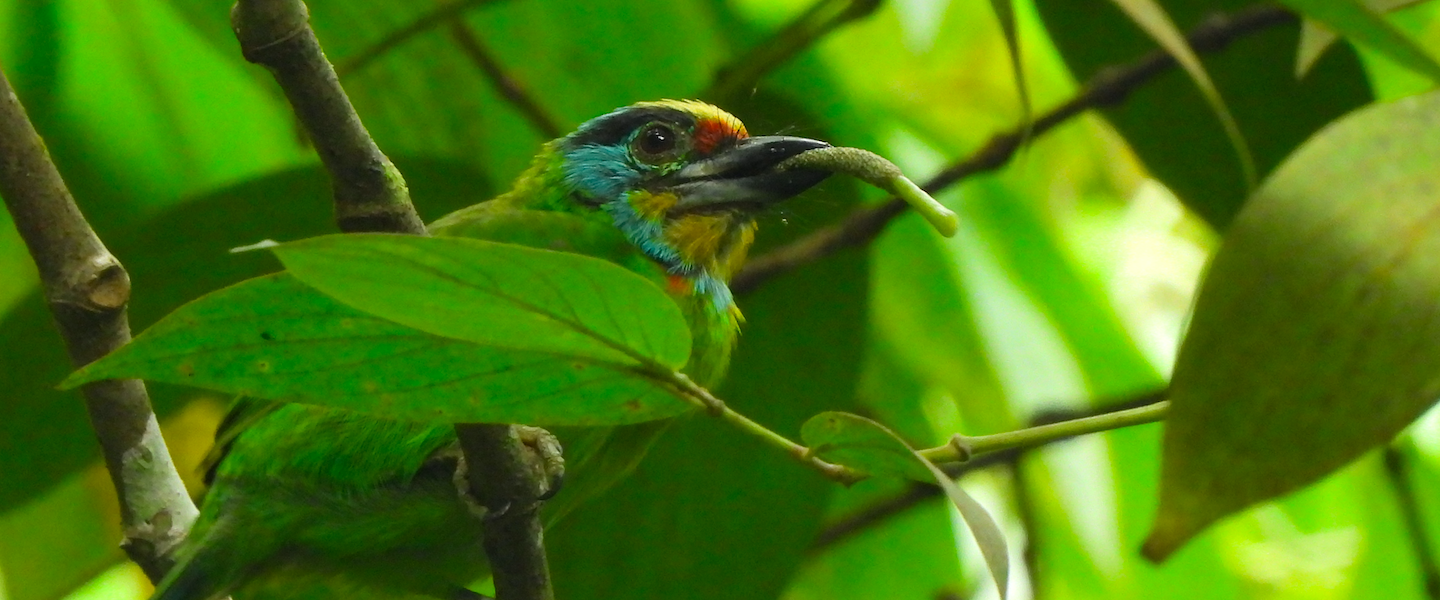Five years ago, in September 2019, I visited Georgia for a few days right before starting university. Although it wasn’t the ideal time for birdwatching, and my experience was limited, I had the best time exploring the country’s wonders — its people, gastronomy, cultural heritage, and stunning landscapes. Despite missing most of the usual target species, I often think of this trip as my first birdwatching experience abroad. Five years later, I still have some pictures of my old camera and plenty of memories of the most incredible landscapes I have ever seen.

Most of my birdwatching took place in Stepantsminda, a village nestled in the Terek River valley at an altitude of 1,750 meters, adjacent to the towering Mount Kazbegi (5,047 meters). Stepantsminda is accessible via the Georgian Military Highway, which connects Tbilisi and Vladikavkaz in Russia. Its breathtaking scenery makes it a top destination, although it wasn’t crowded when we visited.
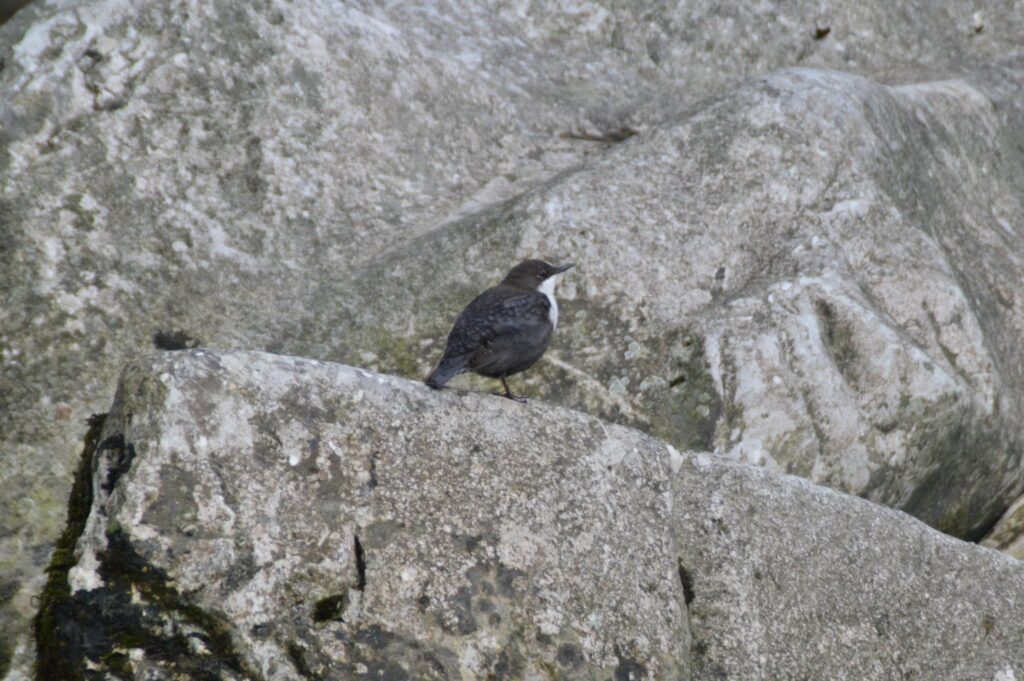
Reaching Stepantsminda from Tbilisi was simple: we caught a marshrutka van from Didube Bus Station, which departs once full. The 3-hour journey included scenic stops at tourist sites like the Ananuri Fortress Complex and the Russia-Georgia Friendship Monument, both popular birdwatching locations. On the return trip, we hired a private tour operator to make additional stops and explore Ananuri—having a car would have provided more flexibility to search for birds. Tbilisi itself also offered some birdwatching opportunities, with Armenian gulls (Larus armenicus), laughing doves (Spilopelia senegalensis), and white-throated dippers (Cinclus cinclus) spotted at various tourist locations.
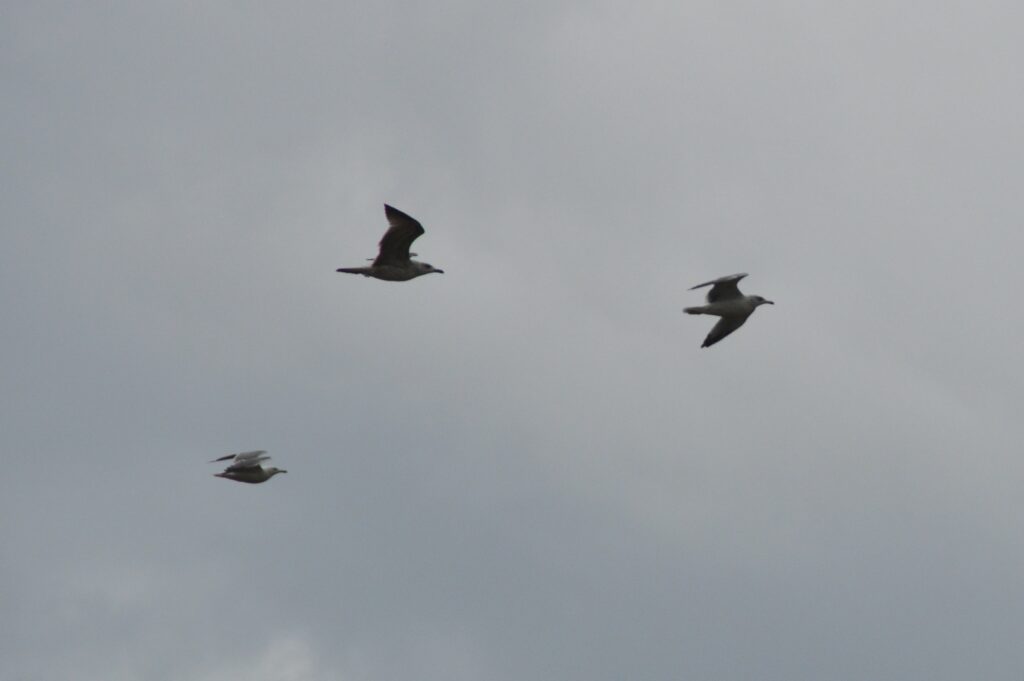
My stay in Stepantsminda lasted three nights, from September 4th to 7th, 2019. I lodged at a local guest house run by three generations of women who served the most delicious local breakfast. Though it’s no longer listed online, there are plenty of accommodations available in the area. The house was perched high on the eastern slope of the valley, offering stunning views of Mount Kazbegi, whenever the clouds parted. The landscape was mostly herbaceous, with patches of Scots pine (Pinus sylvestris), sea-buckthorns (Hippophae rhamnoides) along the river gorges, and a mix of Georgian snow rose (Rhododendron caucasicum), birches, and junipers.

The gardens around the house were full of fruiting trees, attracting great tits (Parus major) and blackbirds (Turdus merula). Occasionally, a song thrush (Turdus philomelos), common chiffchaff (Phylloscopus collybita), or the occasional mountain chiffchaff (Phylloscopus sindianus) — my first lifer of the trip — would visit. From the rooftops, males of the Eastern form of black redstarts (Phoenicurus ochruros) displayed their distinct plumages, quite different from those in Spain.

On our first full day, we headed east through the village towards the renowned Gergeti Trinity Church. The creeks feeding into the Terek River were lush with flowers, attracting gray wagtails (Motacilla cinerea) and Caucasian frogs (Rana macrocnemis). Overhead, small flocks of barn swallows (Hirundo rustica), common swifts (Apus apus), western house martins (Delichon urbicum), and Eurasian crag martins (Ptyonoprogne rupestris) flew, with a male Levant sparrowhawk (Accipiter brevipes) briefly checking them out.

For the hike up to Gergeti, I chose an open grassy slope where the ‘Caucasian‘ form coutellii of water pipit (Anthus spinoletta) was abundant. The open view allowed sightings of several griffon vultures (Gyps fulvus), common ravens (Corvus corax), ‘steppe‘ vulpinus common buzzards (Buteo buteo), long-legged buzzards (Buteo rufinus), kestrels (Falco tinnunculus), and even a golden eagle (Aquila chrysaetos).
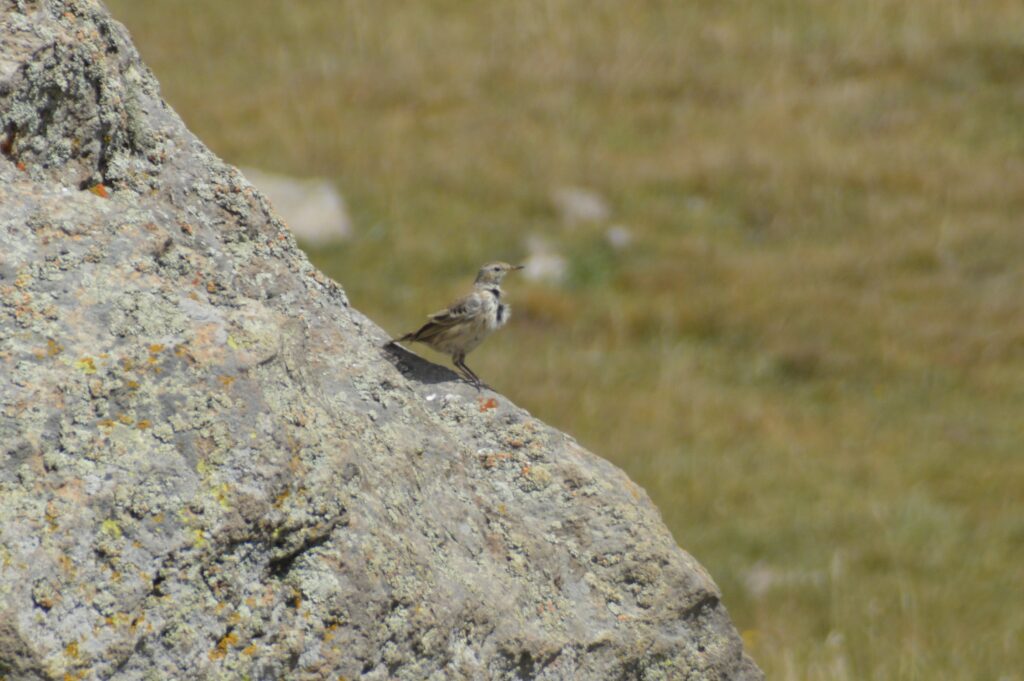
Postnuptial migration was in full swing at Gergeti. Dozens of European bee-eaters (Merops apiaster) and black kites (Milvus migrans) soared above the picturesque hills, making quite a show. After visiting the church and admiring the town and surrounding slopes, we descended via a different route. A birch and juniper scrubland produced a rock bunting (Emberiza cia) and a couple more mountain chiffchaffs, while a nearby pine forest held Eurasian treecreepers (Certhia familiaris), coal tits (Periparus ater), and mistle thrushes (Turdus viscivorus).

On our second full day, I set off before dawn to explore the slopes of Mount Kuro, east of Stepantsminda. The road followed a pine forest, where I saw common chaffinches (Fringilla coelebs), red crossbills (Loxia curvirostra), Eurasian jays (Garrulus glandarius), and a purple heron (Ardea purpurea) taking flight from the pine tree where it spent the night. After some effort, I also found two green warblers (Phylloscopus nitidus). As the fog lifted, I enjoyed one of the best views of Mount Kazbegi during the trip, its peak dusted with fresh snow from an overnight storm.
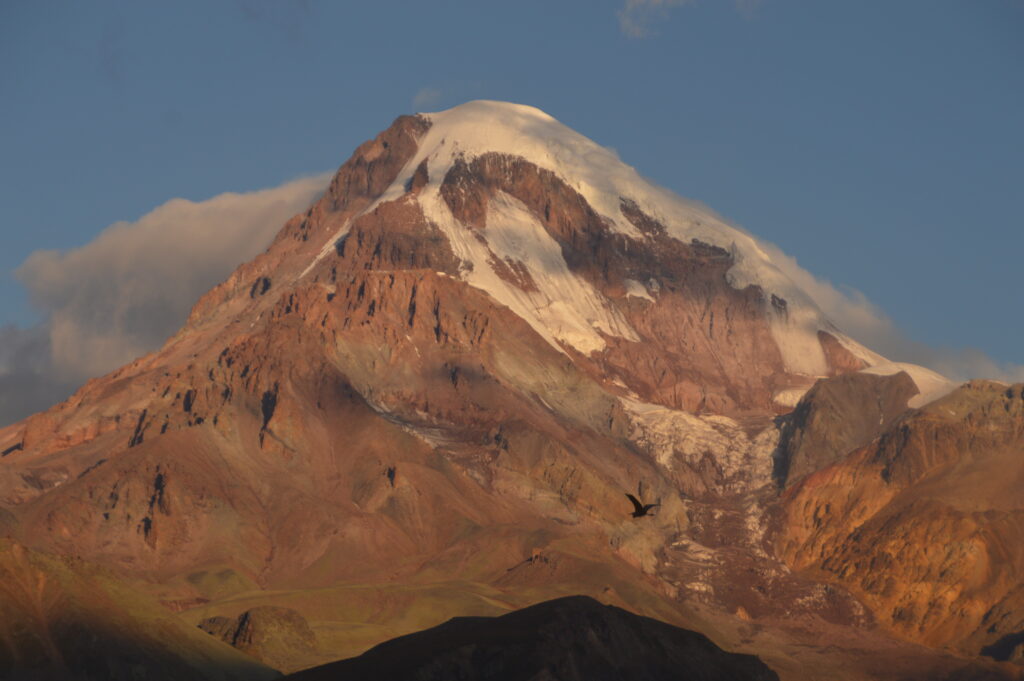
Further up the road, an open area overlooking steep cliffs offered fantastic raptor sightings, including Eurasian sparrowhawks (Accipiter nisus). The slopes were teeming with water pipits and northern wheatears (Oenanthe oenanthe). From above, I heard the haunting calls of two Caucasian snowcocks (Tetraogallus caucasicus), my target species for the day. Although they remained out of sight, the sound of their calls echoing off the cliffs was awe-inspiring.

Later in the morning, I was fortunate enough to spot a wallcreeper (Tichodroma muraria) foraging on the scree slopes under a power line. It allowed me to watch its stunning red-and-black wing patterns for a good 20 minutes. This unexpected encounter, my first-ever wallcreeper, was a highlight of the trip. Years later, I would learn that these slopes are a good place to look for the species.

Descending further, I encountered a red-backed shrike (Lanius collurio) and a lesser gray shrike (Lanius minor), as well as a juvenile common rosefinch (Carpodacus erythrinus). A flock of wild-looking rock pigeons (Columba livia) flew over the fields, adding to the diversity of species seen. Later that day, while having lunch at Rooms Hotel Kazbegi, I enjoyed more views of migrating species from the terrace, adding alpine swifts (Tachymarptis melba) and a great spotted woodpecker (Dendrocopos major).
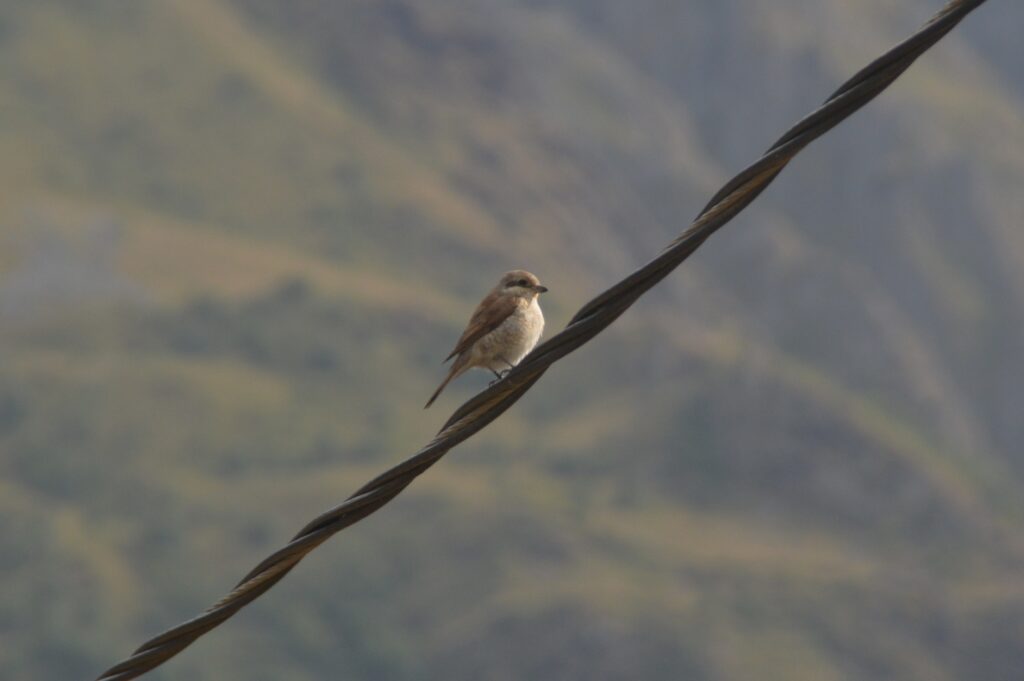
Reflecting on the trip, I’m almost glad I missed some of the Caucasian specialties in a way — it gives me a great reason to return. Although September may not be as productive as spring for these species, the opportunity to connect with migrants I hadn’t seen before was thrilling. I hope to visit Georgia again soon and experience more of its avian wonders, perhaps exploring the renowned migration bottleneck near Batumi along the eastern Black Sea.

